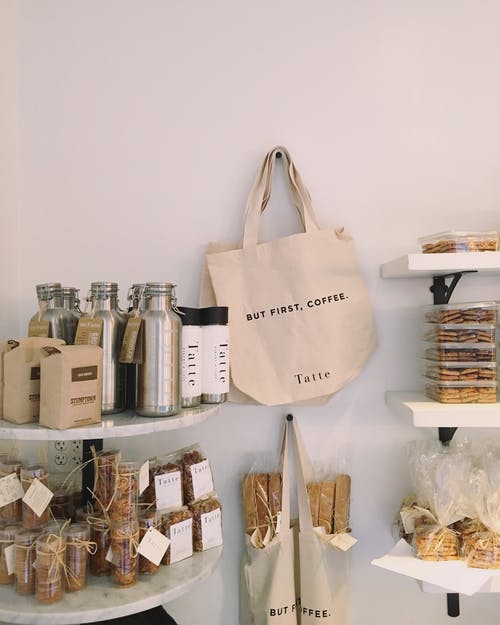In 1969, Don Fisher was having drawback discovering the exact dimension of Levi’s jeans in common garments outlets. His resolution was comparatively radical. At the side of his partner Doris, he opened his non-public retailer, The Gap, selling a wide selection of the product Fisher had came upon so exhausting to buy.
A 300 and sixty 5 days earlier, across the Atlantic, an Italian family business known as Benetton, had opened its first retailer, coming into the mass type market with a comparatively different method. Barely than branded clothes, Benetton began by the use of selling knitwear they made themselves.
From these humble beginnings, every The Gap and Benetton went instantly to develop to be massively a success type outlets. At one time, their superiority in every single place the sector was such that they assumed the standing of “class killers” – chains so massive that they threaten the survival of smaller pageant.
A key function of sophistication killers – totally different well known examples include Toys “R” Us, Home Depot and Staples – is the at hand availability of particular, moderately priced merchandise. This could be a retail constructing in keeping with a clear figuring out of what it is the client wants and enjoyable that decision for at low value.
Get your data from people who know what they’re talking about.
With the announcement this summer season that Gap would shut all its outlets in UK and Ireland, and with Benetton not on the frontier of cool, the idea of these producers as quickly as being so dominant seems comparatively uncommon.
Alternatively the impact of these class killers on in current instances’s type enterprise stays, with a historic previous that is alternatively just like supply primary avid players like Primark, ASOS and Boohoo at a time of monumental flux in the course of the retail panorama and immense vitality on established present chains.
From the very beginning, as an example, The Gap had a crystal clear imaginative and prescient of its purchaser base. Opening the first retailer almost about San Francisco State Faculty, Fisher wanted to attraction to college students and the counterculture era.
To attract them, early Gap outlets moreover supplied knowledge, however these have been briefly dropped. Even when prices weren’t discounted, that they’d been priced comparatively and ready ample to affect that core demographic to purchase there.
Benetton, all through the interim, capitalised on its preliminary status by the use of rising unexpectedly in the course of the Nineteen Seventies. Having just a few outlets in a small house supposed the company might merely dominate native markets, generate high product sales amount and efficiently organize their distribution workforce.
Taking stock
A key distinction between Benetton’s clothes and those available at their pageant (often division outlets) was Benetton’s shiny colours. Dyeing garments on the ultimate minute supposed the company could be versatile and responsive, reacting in brief to changes in establish for.
Moreover important to the company’s very good fortune was its use of refined inventory regulate and its organisation of a gaggle of suppliers, initially situated shut by the use of in north-eastern Italy. With the flexibility to watch stock and know what was selling and the place supposed Benetton might merely plan the drift of present to outlets, while designing and producing clothes customers wanted to buy.
In the US, The Gap was transforming how Americans shopped and dressed, with a shift in focus from Levi’s jeans to the ever current khakis and pocket T-shirts. Shops have been redesigned, however the focus on a slender line of products at moderately priced prices in at hand locations remained. Like Benetton, Gap’s adoption of pc the way in which to control inventory was important to their superior expertise to meet purchaser establish for.

In truth, totally different outlets sought to emulate just a few of those breakthroughs. In 1975, a Spanish garments producer, run by the use of Amancio Ortega opened its first Zara retailer. Zara’s business type briefly centred on enjoyable changing purchaser establish for at tempo.
Then, as the facility of era sped up unexpectedly, and enterprise obstacles continued to fall, the hazard for retailers to supply material further cheaply from Asia higher, ensuing all through the formation of purchaser pushed world value chains in the course of the garments enterprise.
The dizzying tempo of commerce due to these tendencies has ended all through the worldwide type enterprise everyone knows in current instances. It is quick (some would maybe say too quick), at hand and agile. Amazon in current instances develop into the #1 garments retailer in the US and the likes of ASOS are showing neatly.
While the Gap and Benetton laid the foundations for these changes, the facility of these as quickly as edgy and daring radicals has diminished. New a success type producers, like Reformation, Sezanne and Rapanui are liable to mix on-line with bricks and mortar retailing, and make sustainability a core section to their offering.
Alternatively the tactic of The Gap and Benetton – fixing a subject, being different, prioritising consolation, reacting to alter – is value mirroring for in current instances’s enterprise innovators. As shopper consciousness of our environment will improve and as e-commerce hastens even further, the business acumen which made those firms this type of excellent fortune shouldn’t be going cross out of fashion.





